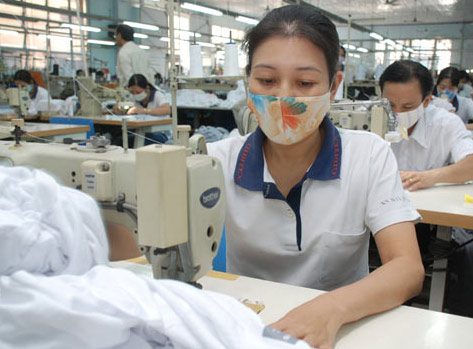Menu product
News - Event
New product
-
 Lifting frame
Lifting frame
Lifting frame
Lifting frame using in factory
-
 Trolley with Lifting Frame
Trolley with Lifting Frame
Trolley with Lifting Frame
Made from Steel with Powder Coating and Galvanizing, used in Production Line.
-
 Unfrozen Tank
Unfrozen Tank
Unfrozen Tank
Made from Stainless Steel, used in Cold Storage for containing fishes, could be unfrozen
-
 Trolley
Trolley
Trolley
Made from Stainless Steel, used for transporting Processed Food
-
 Cage for containing fishes in Cold Storage
Cage for containing fishes in Cold Storage
Cage for containing fishes in Cold Storage
Made from Galvanizing Steel or Stainless Steel, used in Cold Storage for containing fishes
-
 Belt Conveyor
Belt Conveyor
Belt Conveyor
Frame is made from Stainless Steel, including Electrical Control Box – Motor – Inverter, used for Food Processing
-
 Jig for production
Jig for production
Jig for production
Made from Galvanizing Steel or Stainless Steel, used production line
-
 Ball-Roller Table
Ball-Roller Table
Ball-Roller Table
Made from Steel with Powder Coating and Stainless Steel, used in production line
-
 Jig for drying products in oven
Jig for drying products in oven
Jig for drying products in oven
Made from Stainless Steel, used in production line
-
 Shelf for molds (Load: 5 tons/drawer)
Shelf for molds (Load: 5 tons/drawer)
Shelf for molds (Load: 5 tons/drawer)
Made from Steel with Powder Coating, used in production line
News - Event
Business owners have affirmed that the new policy on six-month maternity wouldn’t affect their production plans much. However, they said they would encourage female workers to return to work sooner in order to ensure the normal production schedule of enterprises.
 |
From January 1, 2013, female workers will have the maternity leave period of six months instead of four months as previously stipulated. The new policy has raised worries to businesses, especially the ones in the labor intensive fields.
Pham Xuan Hong, General Director of Saigon 3 Garment Company, who is also the Chair of the HCM City Textile and Garment Association, said that the new policy would certainly influence the production schedules of enterprises, where 80 percent of the labor force are female workers.
“If a lot of workers go on maternity leave at the same time, this would badly affect our production plan. We will not be able to take initiative in arranging our schedules, which would be a big problem for us not only in 2013, but in the upcoming years as well,” Hong said.
He went on to say that he has requested the personnel department to draw up the plan providing against the labor force shortage which may occur when a lot of female workers leave at the same time. The workers with high skills, who can undertake different works of the production line, would be preferable.
Especially, Saigon 3 encourages female workers to come back to work one or two months sooner than stipulated, accepting to pay higher salaries.
“For example, those who return to work after four months, would receive 4 million dong a month instead of their normal pay level of 3.5 million dong. Meanwhile, they would still receive maternity allowances as well,” Hong said.
Phi Ngoc Trinh, Deputy Manager of the Ho Guom Garment Company, has also expressed his worry about the new policy, saying that the production plan would be delayed if too many workers leave at the same time.
“It is a new policy and we still have not time to think about what to do to deal with the problem and how to encourage workers to come back to work soon,” Trinh said.
He said that it is not easy for enterprises to find workers to replace the workers in the production line. In general, laborers need to be trained in order to satisfy the requirements of the company. Therefore, Ho Guom has not found any perfect solution so far.
Meanwhile, Pham Thanh Giang from Vissan, a food supplier, said that in case many female workers leave at the same time, the enterprise would apply the “in-place productivity offsetting policy,” which means that the enterprise would not recruit new employees to fill in the gaps in the production lines, but it would encourage other workers to increase their productivity.
Besides, Giang also said that the company is following a policy on training workers in order to ensure sufficient labor force in case too many female workers leave at the same time. 40 percent of Vissan’s labor force is female workers.
Affirming that the new policy would in no way affect the company’s operation, Nguyen Hoang Giang, General Director of VnDirect--a securities company, said he would offer preferences to those who return to work sooner than expected, or come back to work at the calls of the company.
“They can stay at the office for half a day and the other half at home, but they would still get the whole monthly salary,” Giang said.
VNE

 Tiếng Việt
Tiếng Việt English
English




.png)

